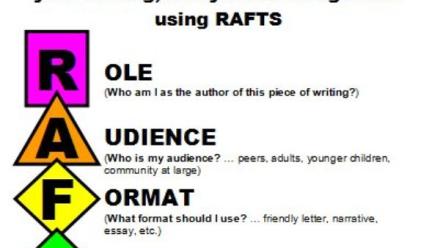Much like reading and understanding, students need multiple opportunities to see models of writing, receive guidance as they learn the process of writing, and consider constructive feedback on each stage of their own writing. It takes time for students to hone their writing skills but it is well worth the effort; as researchers have found a strong connection between writing and reading comprehension (Graham & Hebert, 2010).

Given the numerous skills that contribute to proficient writing, it should come as no surprise that research has found students need more practice time to write while receiving feedback from you and their classmates. In addition, we know that students need to learn the steps in the writing process and receive explicit guidance on how to use writing strategies at each step of the writing process (Sedita, 2012).
Key Instructional Ideas
-
The writing process works. Every step in the process is important to teach. Equally important is your discussion with students around how to apply the writing process in various writing scenarios (e.g., email to your boss, texts to friends, essay for school, etc.).
-
Prewriting: Figuring out what you want to write and a plan to write
-
Writing a Draft: Getting your words and ideas down on paper
-
Revising: Are they things that don’t work? Is your essay too long and needs to be shortened? Now is the time to revise and rewrite!
-
Editing: Time to proofread. Did you cross your t’s and dot your i’s?
-
-
Use scaffolded, systematic instruction in writing
-
Explain the writing skill or strategy.
-
Model how to apply it in an example writing assignment
-
Let students try it out — perhaps while working in pairs and providing feedback — before assigning it as an independent writing assignment.
-
Provide time and opportunities for writing in your class.
-
-
Teach Text Structures. “When students are writing, they use text structure to construct, and when they are reading they use text structure to deconstruct in order to make meaning” (Sedita, 2012). Understanding word, sentence, and paragraph structures helps adolescent writers better organize and express their ideas as well as understand more as they read.
|
Text Structure |
Definition/Example |
|---|---|
|
Cause and Effect |
This structure presents the causal relationship between a specific event, idea, or concept and the events, ideas, or concept that follow. Example: Weather patterns could be described that explain why a big snowstorm occurred. |
|
Comparison / Contrast |
This type of text examines the similarities and differences between two or more people, events, concepts, ideas, etc. Example: An essay about ancient Greece may explain how the Spartan women were different from the Athenian women. |
|
Description |
This type of text structure features a detailed description of something to give the reader a mental picture. Example: An essay may tell all about whales or describe what the geography is like in a particular region. |
|
Order / Sequence |
This text structure gives readers a chronological of events or a list of steps in a procedure. Example: An essay about the American revolution might list the events leading to the war or the steps involved in harvesting blue crabs might be told. |
|
Problem–Solution |
This type of structure sets up a problem or problems, explains the solution, and then discusses the effects of the solution. |
Related Resources
Blog: Reading Ways
Supporting Argumentative Writing and Classroom Debate
Blog: Shanahan on Literacy
Writing as a Response to Reading
Writing




